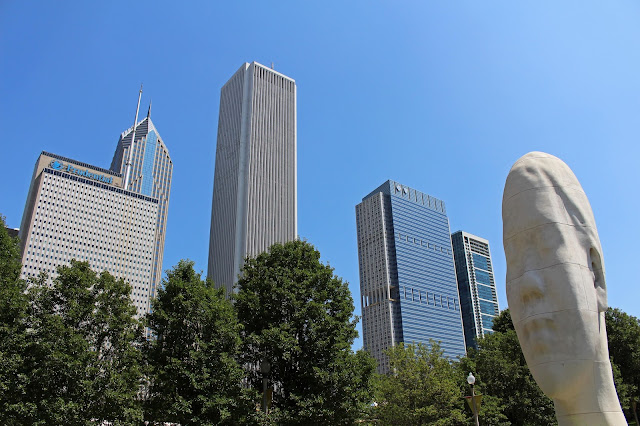Imagine my surprise when, strolling down one of Chicago
These are the Horses of Honor, a commemoration of the more than 500 Chicago
police officers who have lost their lives or been seriously injured in the line
of duty since 1853. Local financial corporation Wintrust formed a partnership with the Chicago
Police Memorial Foundation and together they commissioned a local manufacturer to make at least
75 of these horses, which were then designed and painted by local artists.
I only saw six of these charming horses
but they have been installed in public places throughout the city. Various
companies, organisations and individuals have sponsored the horses and that sponsorship
money has gone to the Foundation to assist the families of Chicago’s fallen or
catastrophically injured policemen and women.
Horses seem an appropriate animal to
choose for such a scheme as they also pay tribute to the police officers of the Chicago Police Department
Mounted Patrol Unit and their equine companions.
Horse at rear: Sponsor: AT&T. Artist: Jaime Foster. Honouring Patrolman Anthony N. Rizzato.
Horse closest to camera: Sponsors: Rock Band ‘Chicago
Horse closest to camera: Sponsors: Rock Band ‘
Sponsor: Assurance Agency Ltd. Artist: Brittney Leeanne Williams. Honouring: Patrolman Edward L. Barron.
Sponsor: Zeller Realty Group. Artist: After School Matters. Honouring Sergeant Charles E. Eichhorst.
Sponsors: Roenigk Family Foundation, Guesthouse
Hotel, and Inside Publications. Artist: Sheila
Swann. Honouring P.O. Michael R. Bailey.
Sponsor: United Service Companies. Artist: Lori Murphy. Honouring Patrolman Terrence E. Loftus.
This was one of the cows from that now-famous herd, ‘Cows
on Parade’, which went on to become an international phenomenon after first
inhabiting the streets of Chicago
The concept has since taken off around the world and various
countries have now had local artists, designers, celebrities paint, decorate,
design cows, horses, sheep (and even eggs – remember the two blogs I wrote
about New Zealand’s 2014 Whittaker’s Big Egg Hunt here and
here).
Either the objects are sponsored or, at the end of their exhibitions, are auctioned off to raise money for a nominated local charity. Apparently, during its 12-year run ‘Cows on Parade’ raised more than US$20 million for charities around the world, so not only are these painted creatures a fabulous way for cities to attract tourists and for artists to showcase their talents but they are also creating positive change around the world through their enormous fundraising achievements. A perfect combination!
Either the objects are sponsored or, at the end of their exhibitions, are auctioned off to raise money for a nominated local charity. Apparently, during its 12-year run ‘Cows on Parade’ raised more than US$20 million for charities around the world, so not only are these painted creatures a fabulous way for cities to attract tourists and for artists to showcase their talents but they are also creating positive change around the world through their enormous fundraising achievements. A perfect combination!



















































